
Baltimore Harbor’s Green Infrastructure
EcoTours

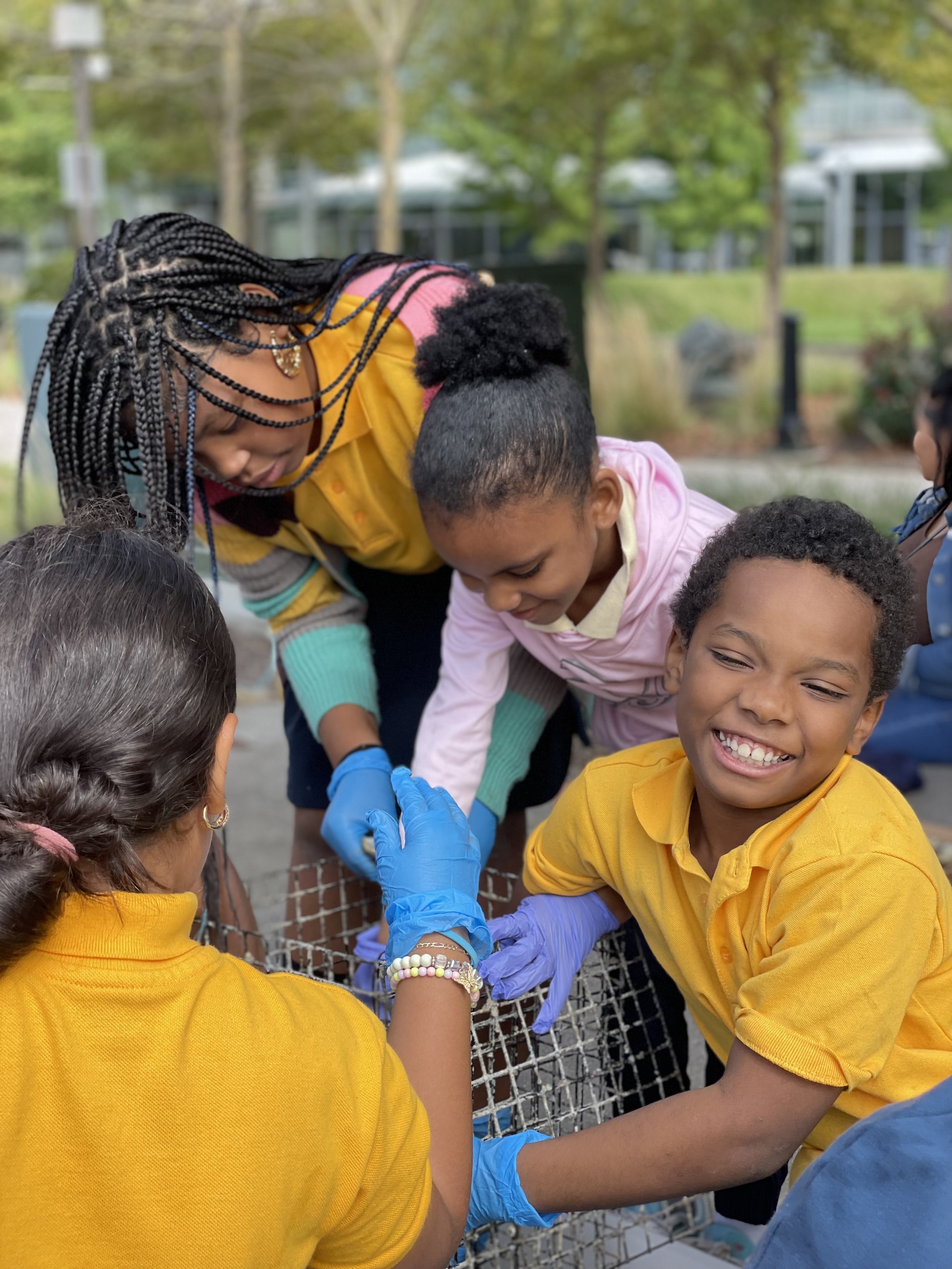
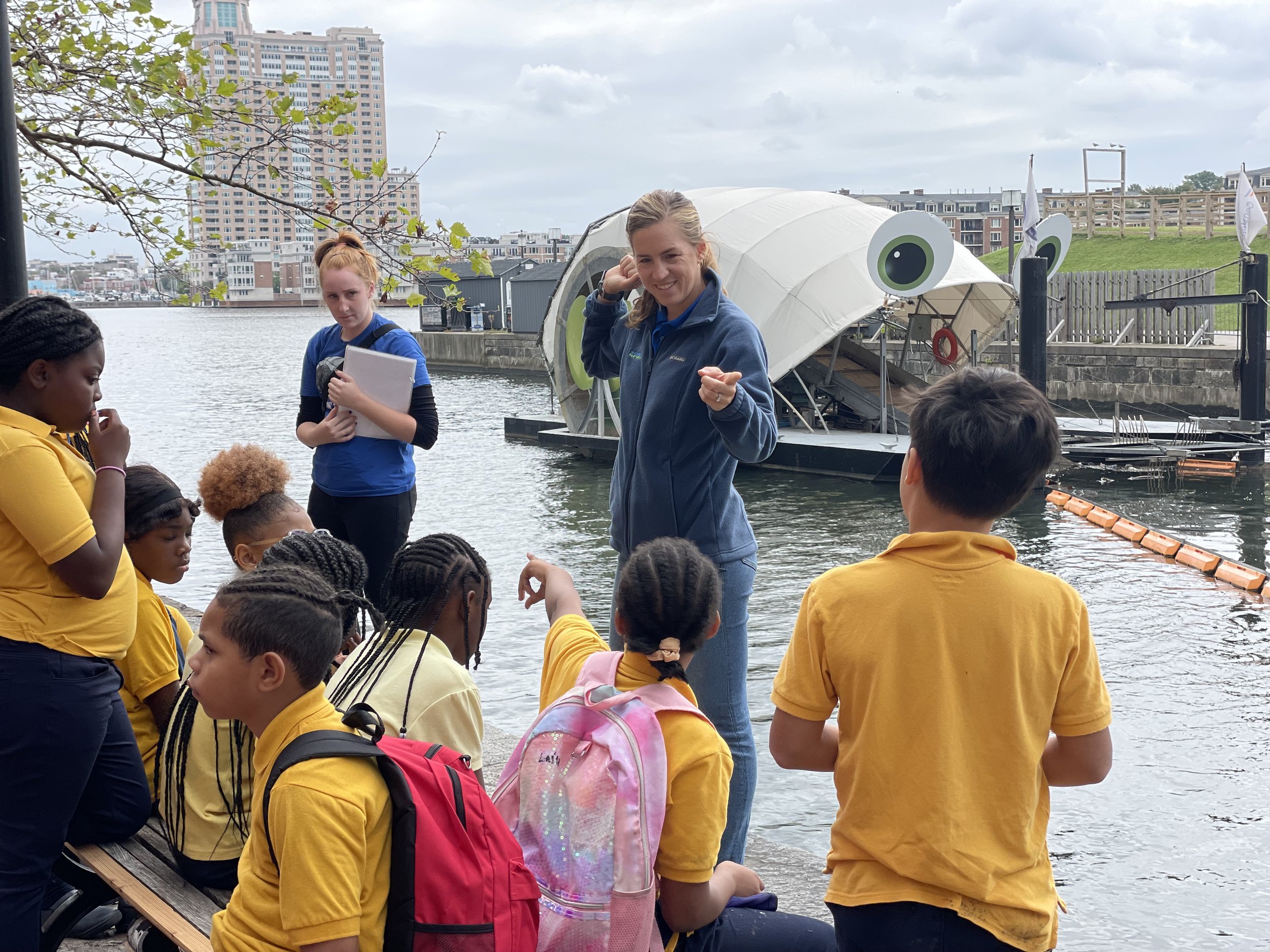
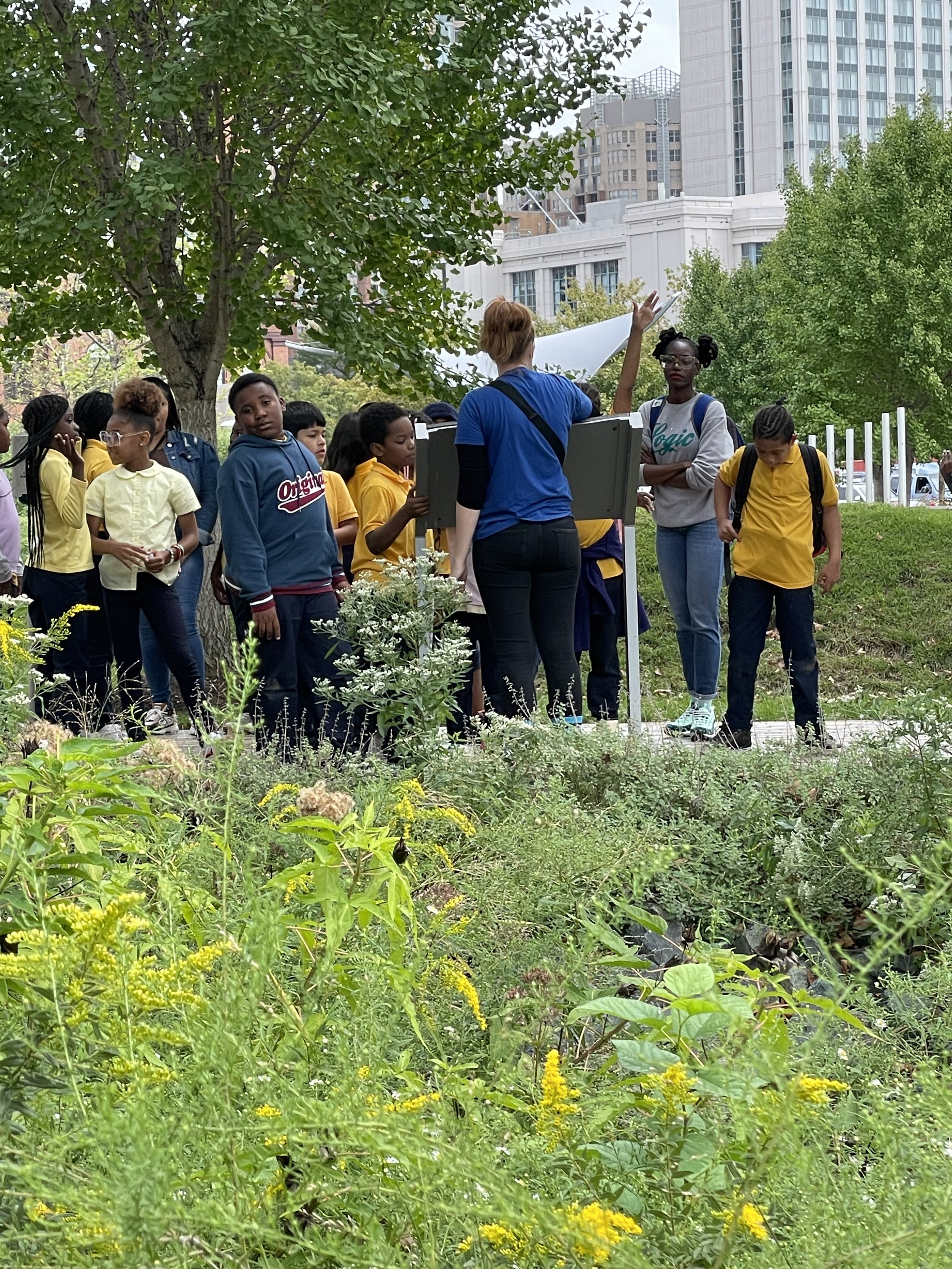

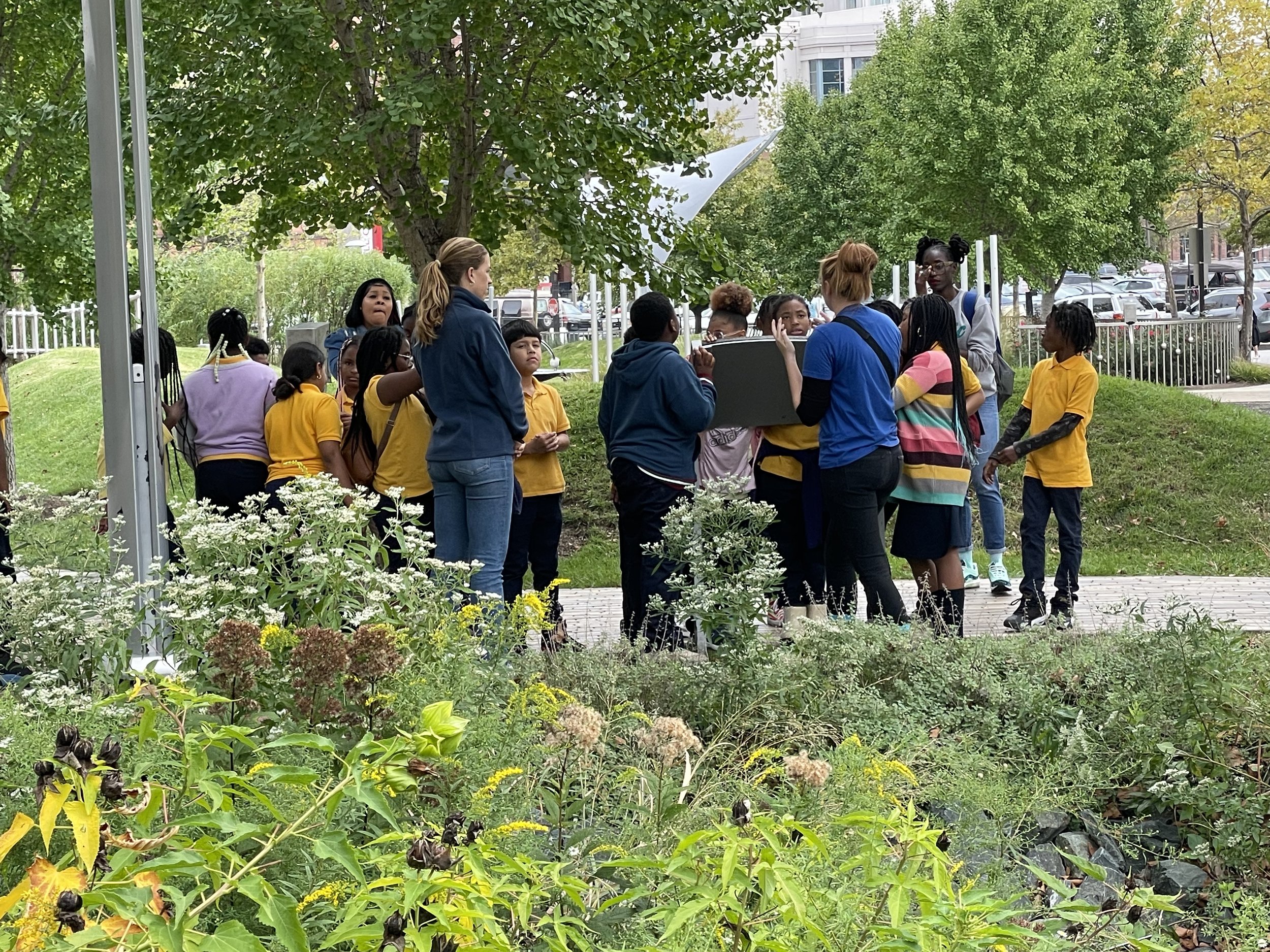
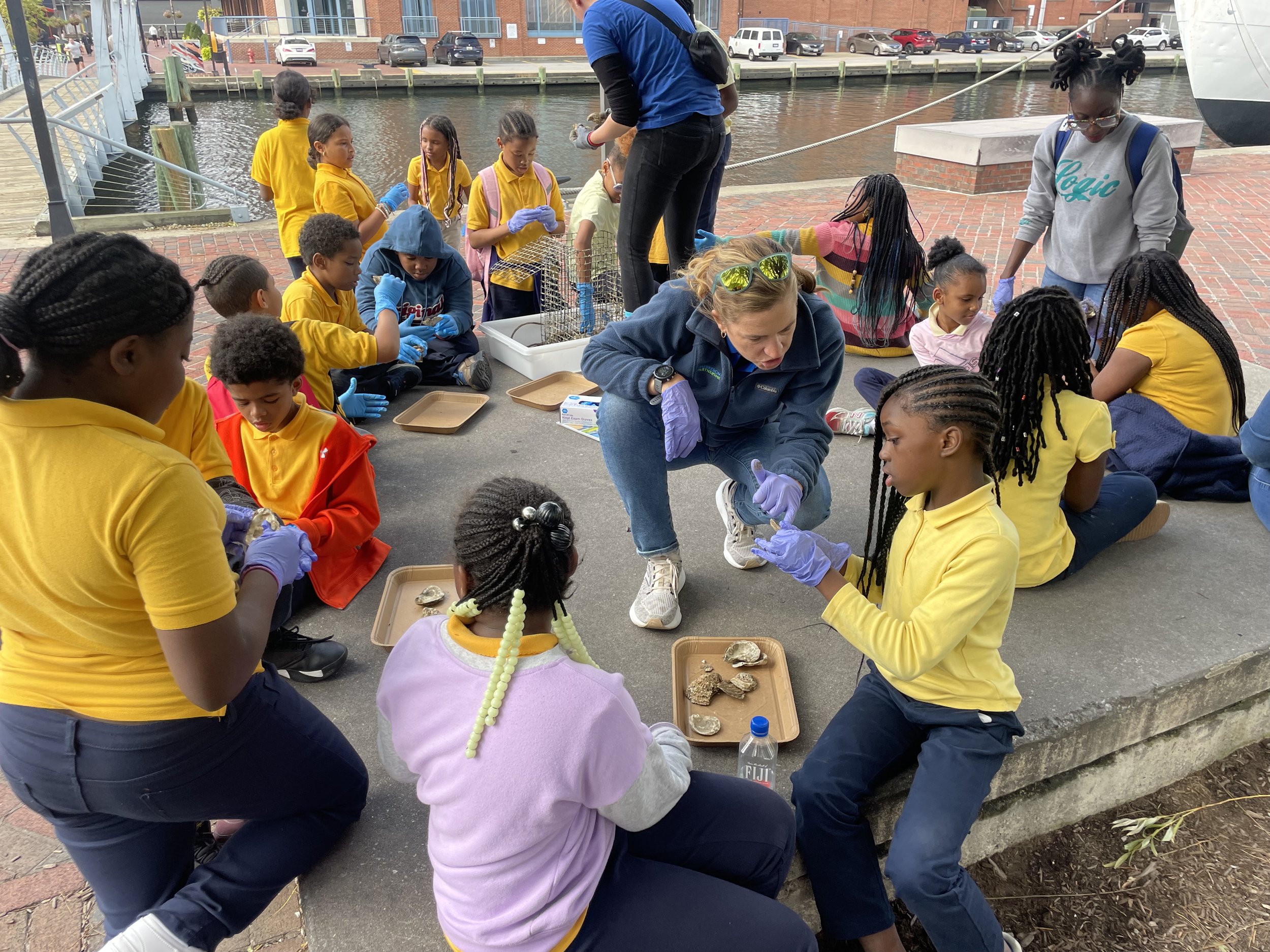
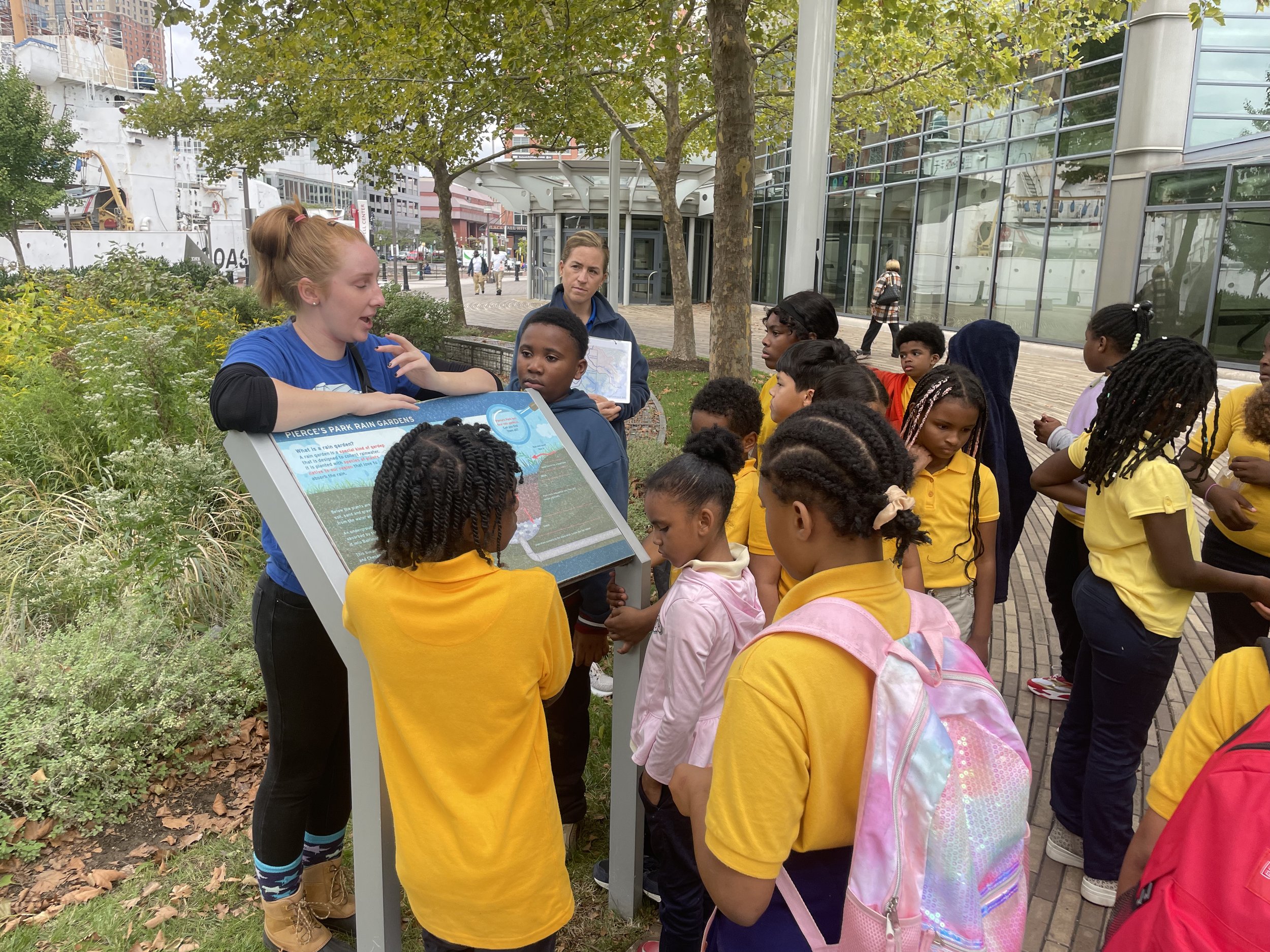
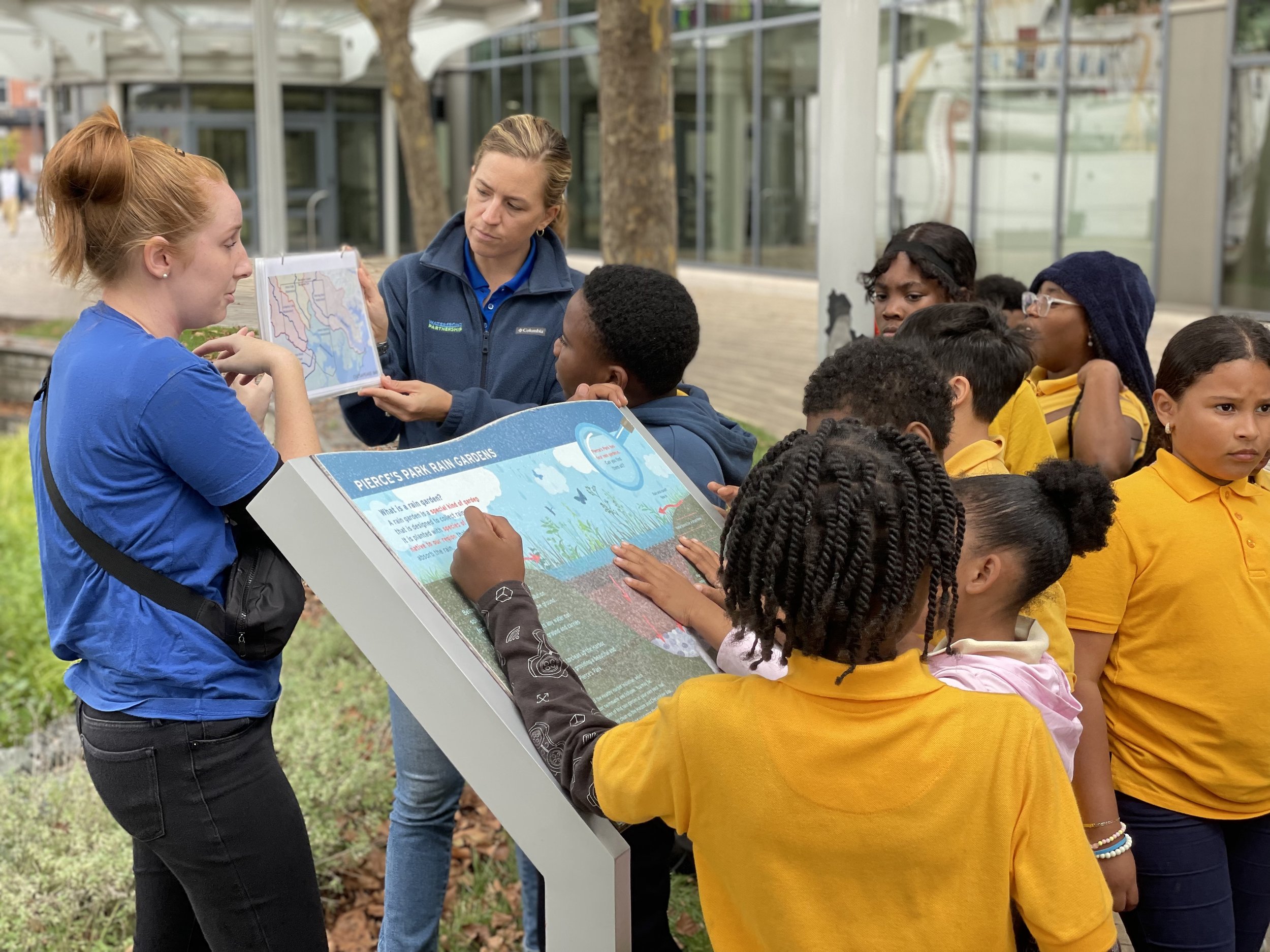
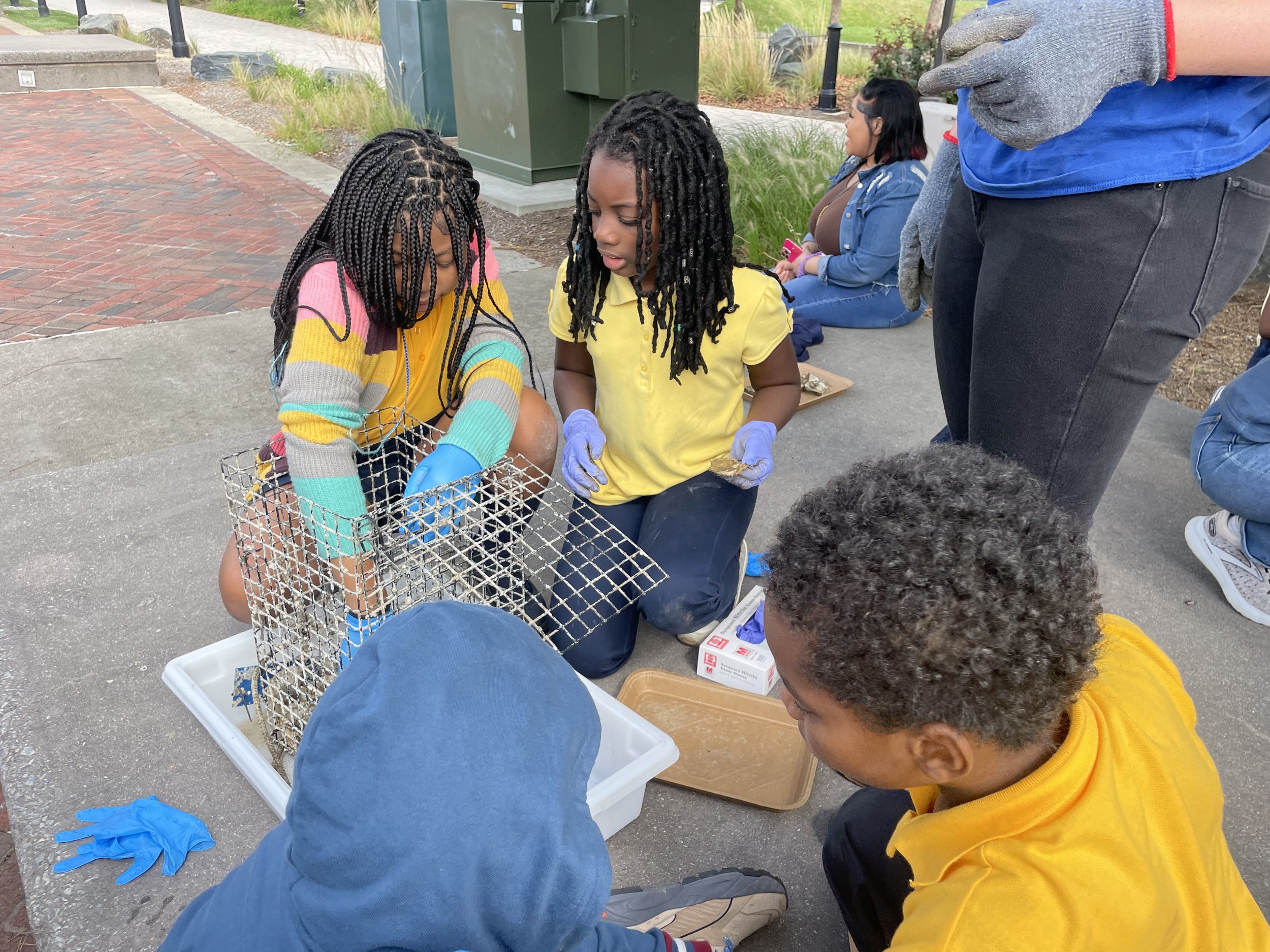
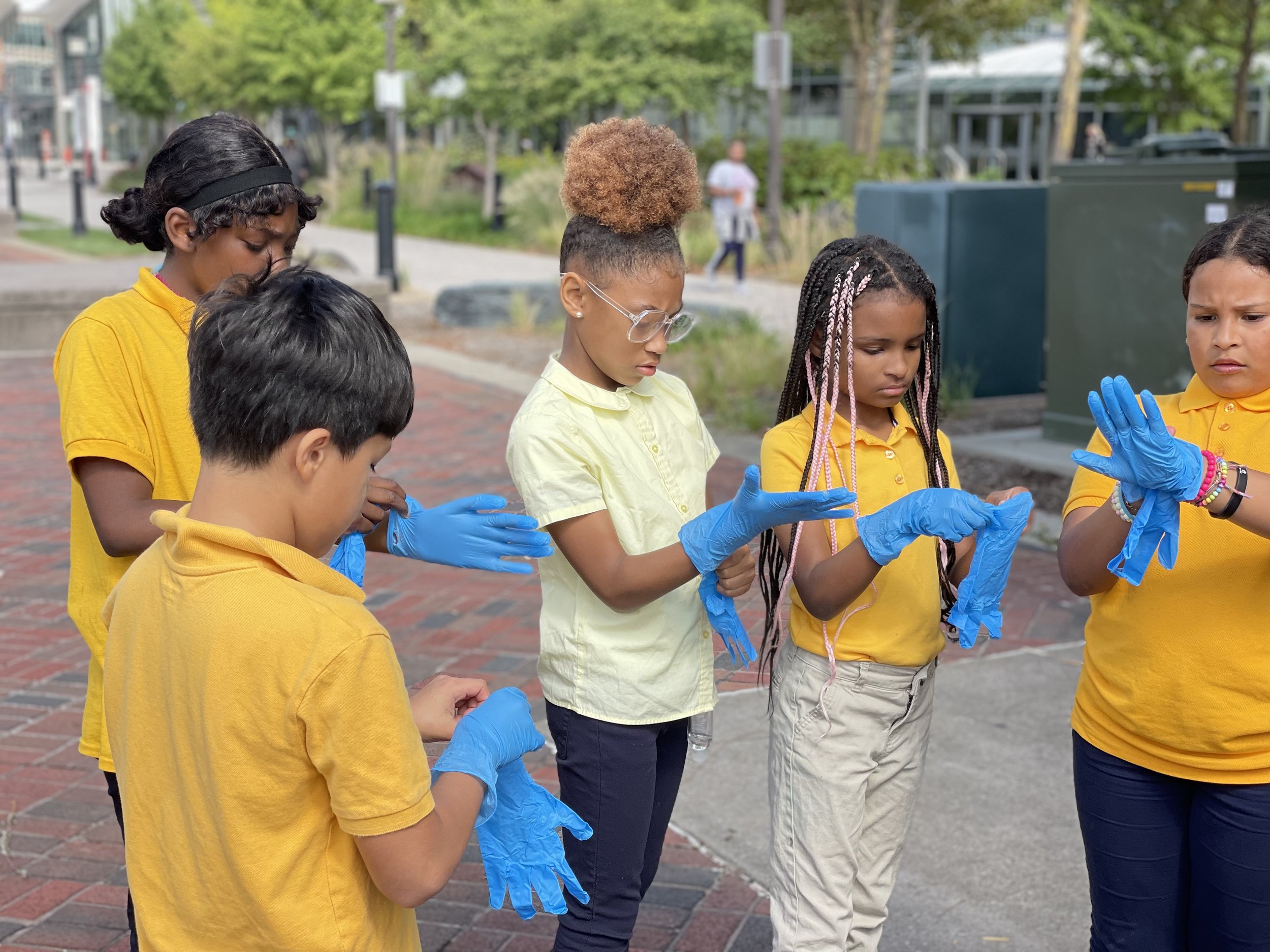
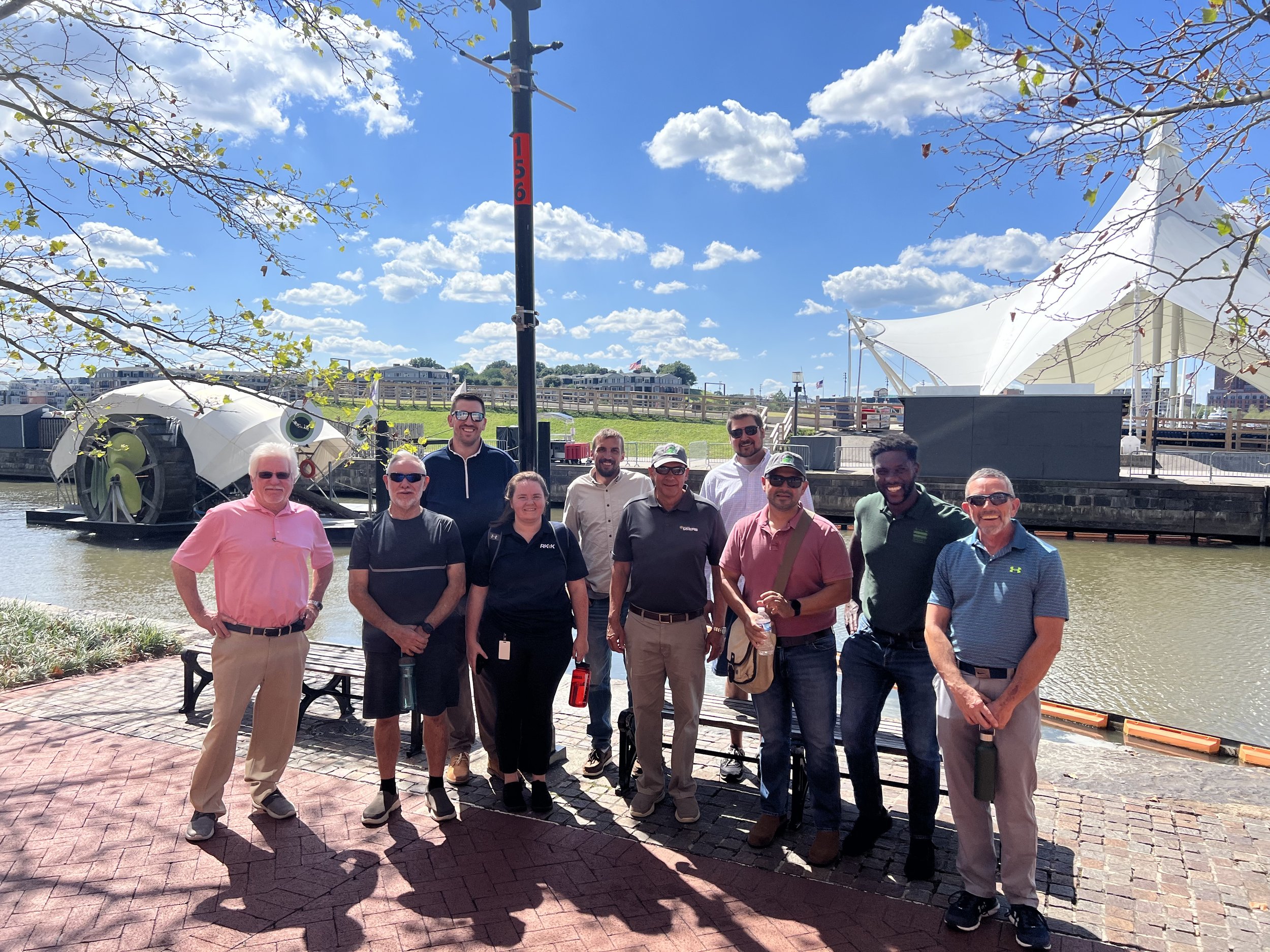
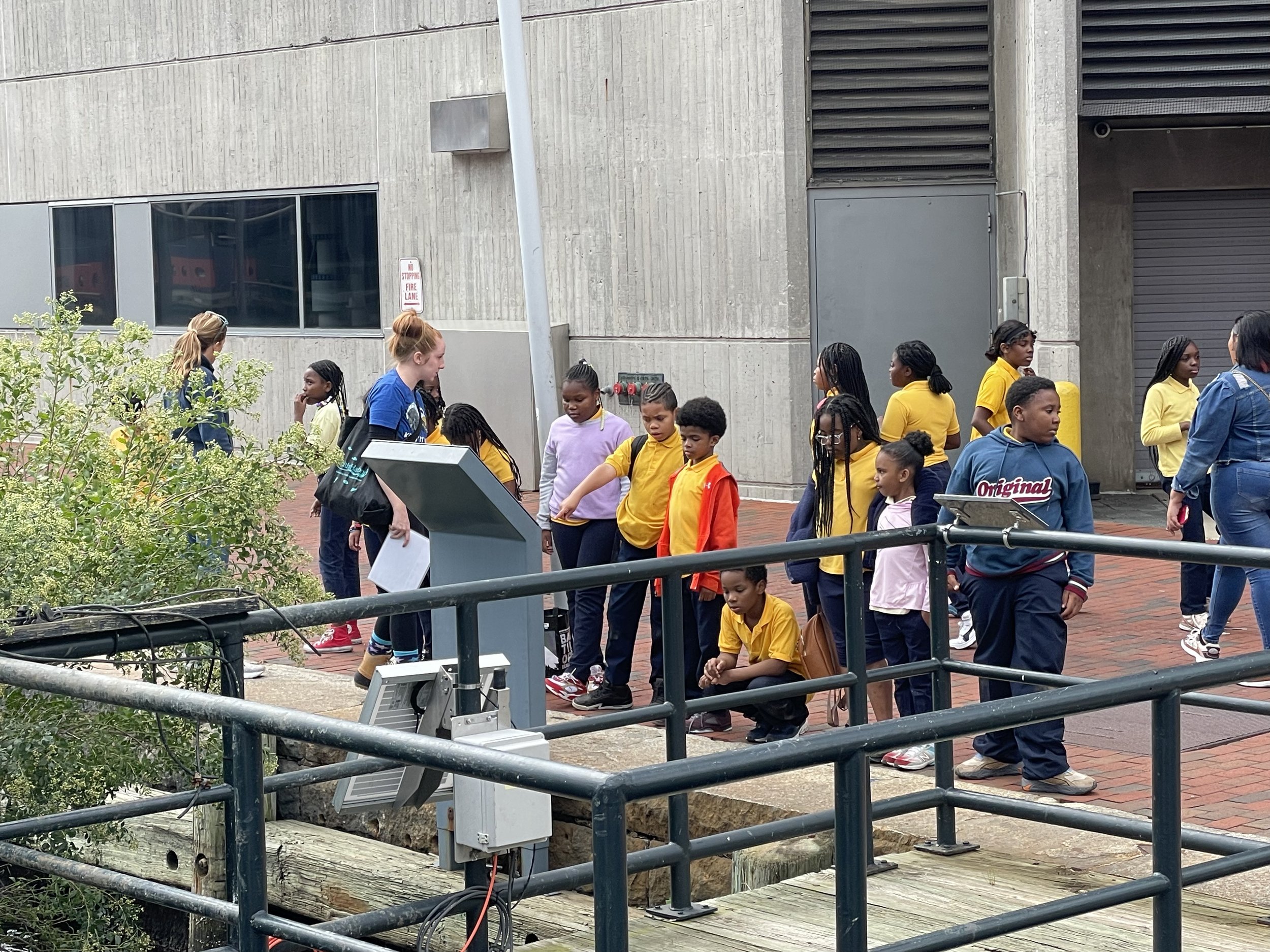
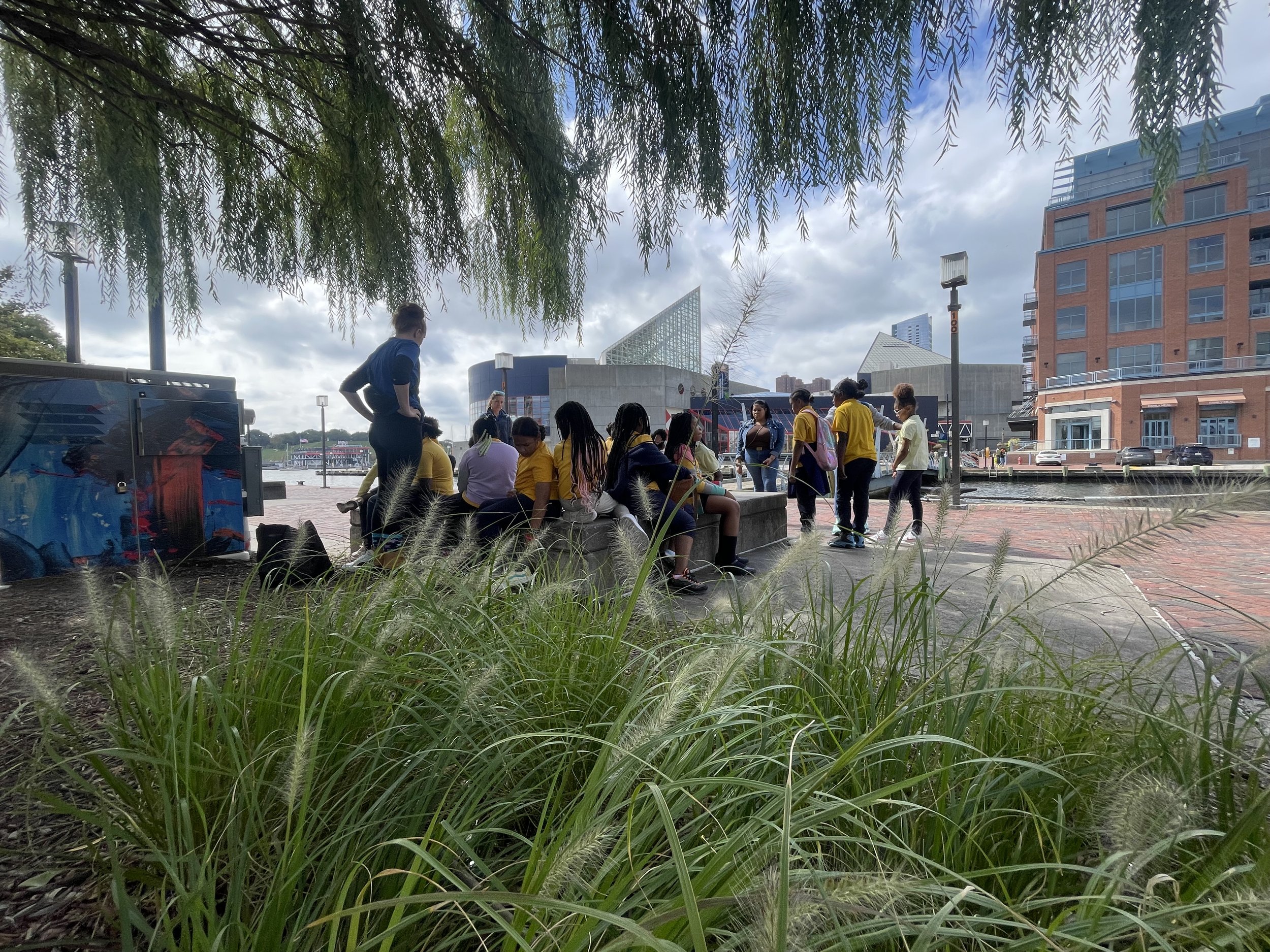
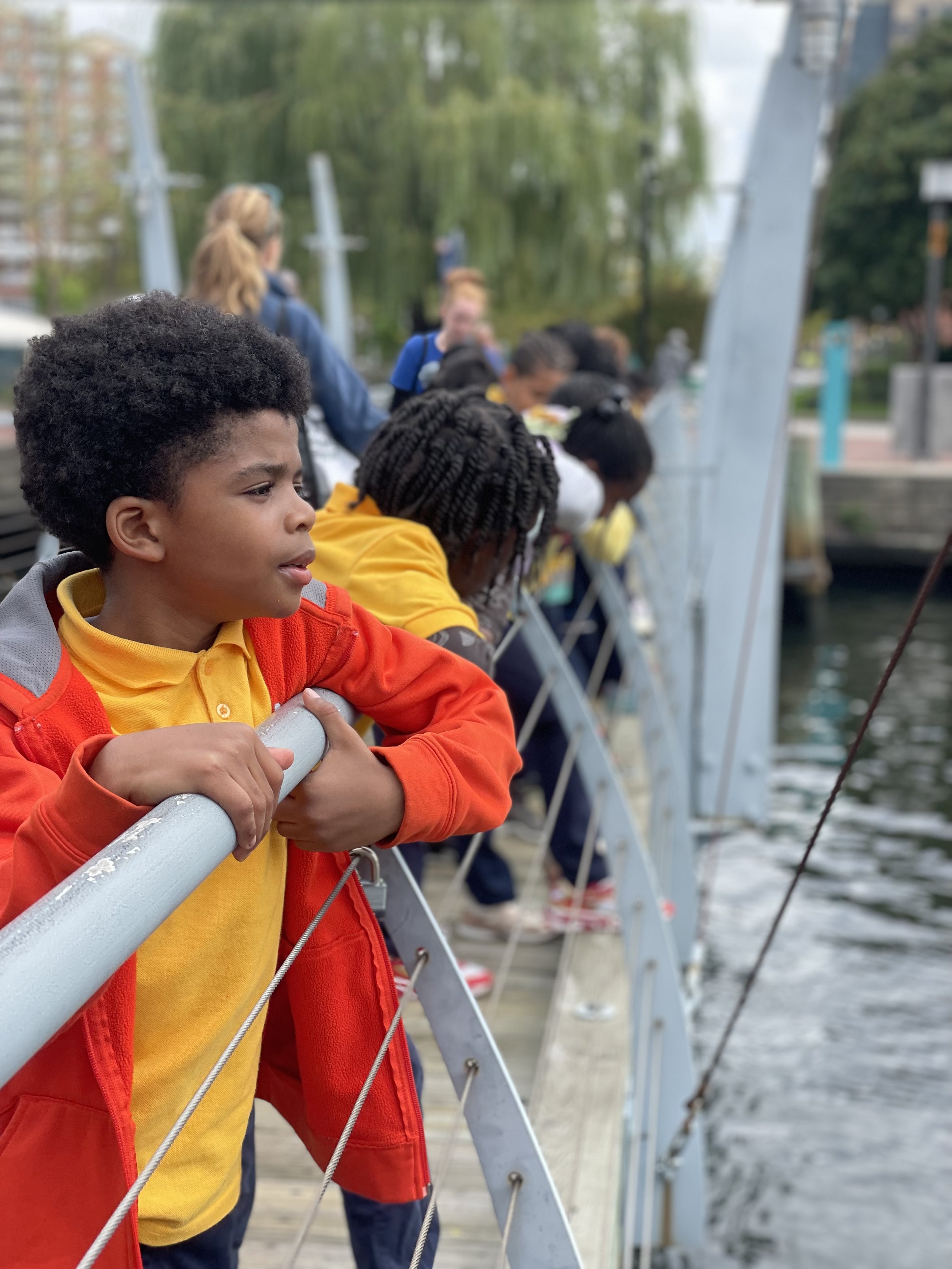
Witness how urban green infrastructure projects have transformed Baltimore's waterways!
Join us for an EcoTour and celebrate over a decade of innovative green infrastructure projects along the Inner Harbor's promenade. These guided walking tours offer a comprehensive view of the various urban green initiatives led by the Waterfront Partnership's Healthy Harbor Initiative and its partners. Come see how these projects have transformed the Baltimore's waterways into a healthier, sustainable environment.
Sign up for an EcoTour today! Our tours are for all ages (including adults!) and can be customized to fit your interests! Choose either a one hour Ecotour, or an EcoTour with added games & activities (2 hours)! Bring your class, conference group, coworkers, or friends and family to learn about Harbor life!
If you are a 5th grade Baltimore City Public Schools class, you qualify for a free two hour field trip with bus reimbursement! Select “Harbor Scholars” when booking your trip!

Tour Highlights & Landmarks
-

National Aquarium Floating Wetlands
Take a walk through the National Aquarium’s Floating Wetland exhibit, installed in the summer of 2024, and see what the Harbor’s coastline looked like prior to industrialization. Learn how this project improves water quality and increases habitat for native animals!
-

Oyster Gardens
Waterfront Partnership of Baltimore has been growing baby oysters (spat) in the Harbor for over 10 years! At this stop you’ll learn about how oysters are an integral part of the Harbor ecosystem, and get to see baby oysters up close!
-

Rain Garden
The Pierce’s Park rain garden is one of many beautiful native gardens around the waterfront. Witness biodiversity, smell the catmint, and check out our bug hotel feature!
-

Mr. Trash Wheel
This Baltimore icon might just be the highlight of your EcoTour! You may recognize his adorable googly eyes, but now you’ll get to know how exactly he is able to eat so much trash, and how he’s working with his human friends to change the culture around trash.

ECOTOUR PRICING
Please note: Your group type, EcoTour type, and number of attendees will determine pricing.
Baltimore City Public Schools EcoTour: $100-$150
Other student group EcoTour: $150-$200
Adult group EcoTour: $300-$500
Add Games & Activities: $100 (adds 1 hour)
If you are a 5th grade Baltimore City Public Schools class, you qualify for a free two hour field trip with bus reimbursement! Select “Harbor Scholars” when booking your trip!
Don’t see a time or price that works for you?
Email chloe@waterfrontpartnership.org to see if we can accommodate you
-
Anyone! We welcome groups of all ages to come learn about our green projects! Whether you’re a school group, a conference group, or just a group of friends, you will enjoy this eco adventure!
-
Our exact meeting place will depend on the type of tour you book, so check your email after requesting a tour to see our meeting place! In general, we meet at the Inner Harbor.
-
There are multiple garages at the Inner Harbor where you can park, or street parking if you prefer. For large groups on a 1 hour tour, you can pull into the National Aquarium for unloading and loading.
-
If you book a 1 hour ecotour, you will not have access to restrooms. If you have booked a 2 hour tour, you will have access to restrooms, but only for part of the tour
-
Full payment is required at the time of booking to ensure we can hold your scheduled spot.
-
EcoTours are rain or shine. However, if cancelled due to extreme weather the tour can be rescheduled or a refund can be provided

Waterfront Partnership of Baltimore Inc. is a non-profit organization dedicated to enhancing and promoting the waterfront district, parks, and public spaces. We create welcoming programs, events, and recreational experiences while working toward a healthy harbor. We are committed to fostering connections among diverse communities to ensure equitable access to our blue and green space

Request a Healthy Harbor EcoTour
Sign up for an EcoTour today! Our tours are for all ages and can be customized to fit your interests. We'll be in touch to schedule and plan your EcoTour experience.

